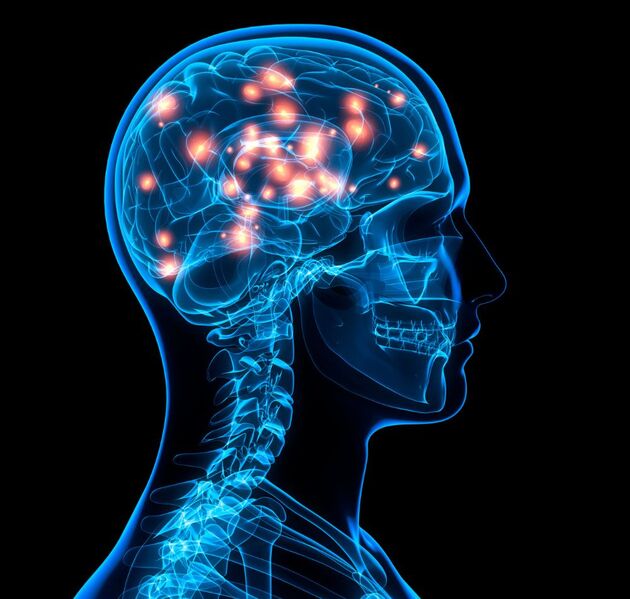Advanced Therapies for Neurological Disorders

The spectrum of situations that have an effect on the nervous system is a complex landscape that is represented by neurological illnesses. These illnesses can be broken down into a number of different categories, each of which has its own particular set of difficulties:
Stroke
Leading cause of neurological disability, stroke results from disturbance of blood flow to the brain. The resulting damage could show up as anything from cognitive abnormalities to movement problems. With an eye toward recovering lost abilities and encouraging recovery, neurorehabilitation treats the aftermath of strokes.
Traumatic Brain Injury (TBI)
Often resulting from falls or accidents, traumatic brain injuries affect cognitive and physical aspects of life. The complex effects call for thorough neurorehabilitation treatments combining emotional support, motor skill improvement, and cognitive therapies.
Multiple Sclerosis (MS)
Demyelination in the autoimmune disorder known as multiple sclerosis causes problems for the central nervous system. Neurorehabilitation turns into a dynamic process that adapts to the erratic course of MS, emphasizes on improving adaptive skills, and addresses changing symptoms by means of emphasis on.
Parkinson's Disease
With motor dysfunction and tremors, Parkinson's Disease calls for specific neurorehabilitation. By stressing mobility, balance, and everyday living activities, therapies seek not only to reduce symptoms but also to improve general quality of life.
Spinal Cord Injury
Spinal cord injuries that cause paralysis or impaired motor ability call for focused neurorehabilitation. Whether by physical therapy, assistive devices, or creative technology, the focus is on maximizing functional freedom.
Neuropathy
Pain, numbness, and weakness brought on by neuropathy call for different techniques in neurorehabilitation. Therapies seek to control symptoms, improve sensory experience, and minimize effects on daily living.
Amyotrophic Lateral Sclerosis (ALS)
Affecting motor neurons, ALS is a progressive neurodegenerative disease that requires continuous neurorehabilitation to treat muscle weakness, breathing difficulties, and related symptoms. The strategy emphasizes on keeping function and improving quality of life.
The Crucial Role of Neurorehabilitation Centers
Leading providers of complete treatment for people overcoming the difficulties presented by neurological diseases are neurorehabilitation centers. These centers take a whole-approaches involving:
Multidisciplinary Teams
Working together, expert teams of neurologists, physical therapists, occupational therapists, speech therapists, and psychologists develop individualized and combined treatment plans.
Assessment and Goal Setting
Comprehensive evaluations are carried out to grasp the personal strengths and difficulties. Then, to direct the recovery process, realistic and reasonable objectives are established.
Physical Therapy
With focused activities and treatments meant to increase strength, coordination, and mobility, physical therapy is crucial in neurorehabilitation.
Occupational Therapy
Working with clients, occupational therapists help to improve daily living skills, increase independence, and address cognitive function.
Speech and Language Therapy
Specialized treatments are used to enhance these vital skills for persons having swallowing problems or communication challenges.
Technology-Assisted Rehabilitation
Modern technology are used at neurorehabilitation centers to improve the healing process. These could call for virtual reality, robotic exoskeletons, and neurostimulating methods.
Exploring Innovative Therapies in Neurorehabilitation
As neurorehabilitation develops, creative treatments are showing up to improve the recovery process even more: :
Neuroplasticity
Neurorehabilitation adopts the idea of neuroplasticity, the amazing capacity of the brain to restructure and adapt. Therapies are meant to take use of this natural flexibility so that they could promote skill development and rehabilitation.
Brain-Computer Interface (BCI)
BCI technology creates direct contact between the brain and outside devices, therefore opening new vistas in neurorehabilitation. For people with neurological problems, this invention offers means for better motor control and communication.
Stem Cell Therapy
Stem cell therapy stands out as a possible revolutionary development in the field of regenerative medicine. Research presents fresh opportunities for neurorehabilitation as it investigates how stem cells might be used to heal damaged neural tissues and enhance general neurological performance.
Neuromodulation
including deep brain stimulation (DBS) and transcranial magnetic stimulation (TMS). These treatments seek to control brain activity, therefore relieving some neurological disorders of their symptoms.
Access to Specialized Care
Ensuring general access to specialized neurorehabilitation treatment is still difficult, particularly in areas where such institutions could be few.
Cost of Advanced Technologies
Modern technology used in neurorehabilitation have financial expenses, which presents difficulties for those looking for these advanced treatments.
Need for Ongoing Support
Often a long-term process, neurorehabilitation requires ongoing care for people to keep and grow from their improvement.Notwithstanding these difficulties, continuous research, new technologies, and increasing focus on comprehensive treatment point to a bright future for neurorehabilitation. Advanced treatments for neurological diseases depend much on neurorehabilitation institutes. These centers greatly help those with neurological problems to live better by integrating knowledge, technology, and a patient-centric approach. There is a complex route to recovery, and neurorehabilitation is a lighthouse of hope and advancement on that path toward better quality of life.


